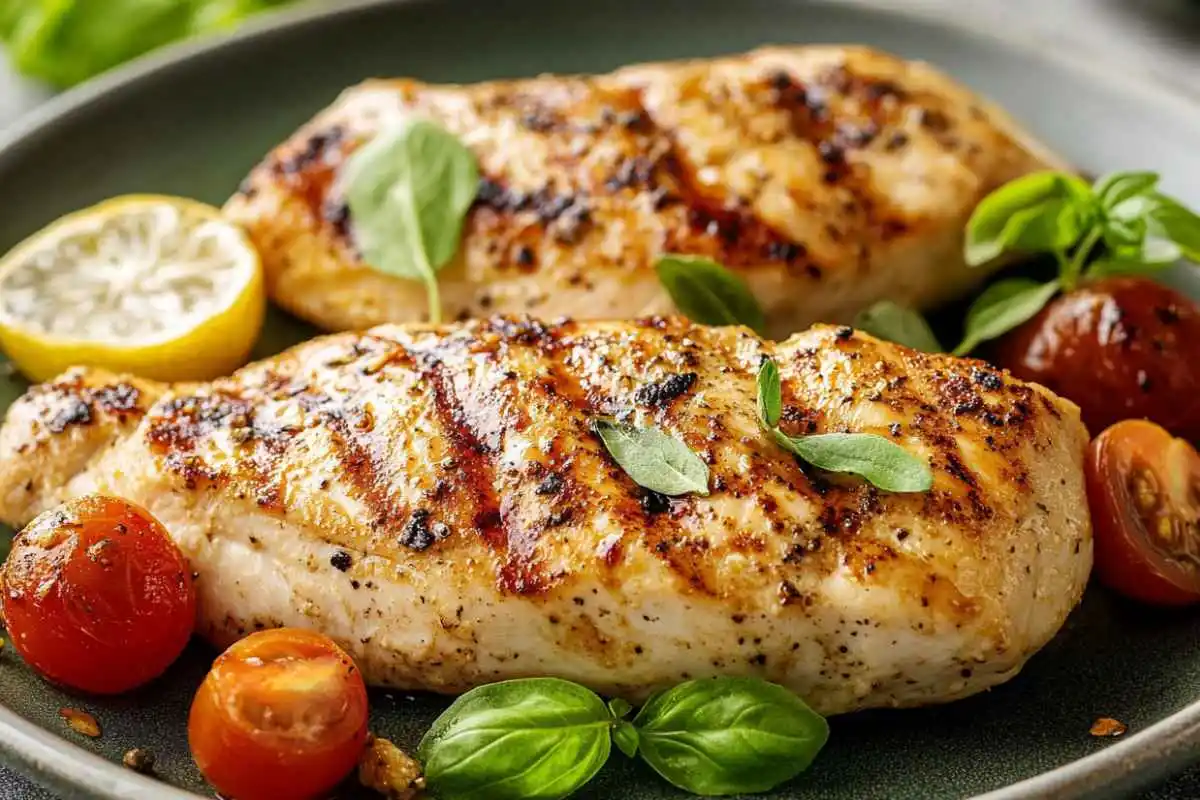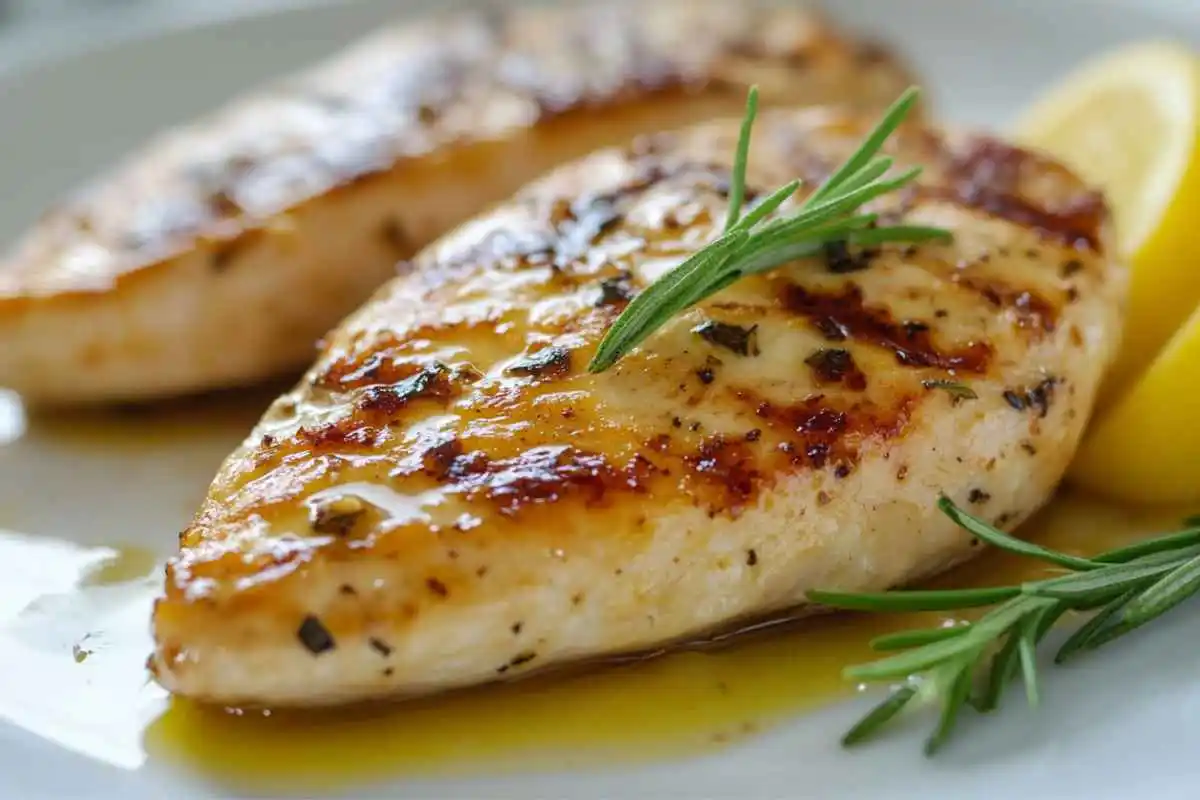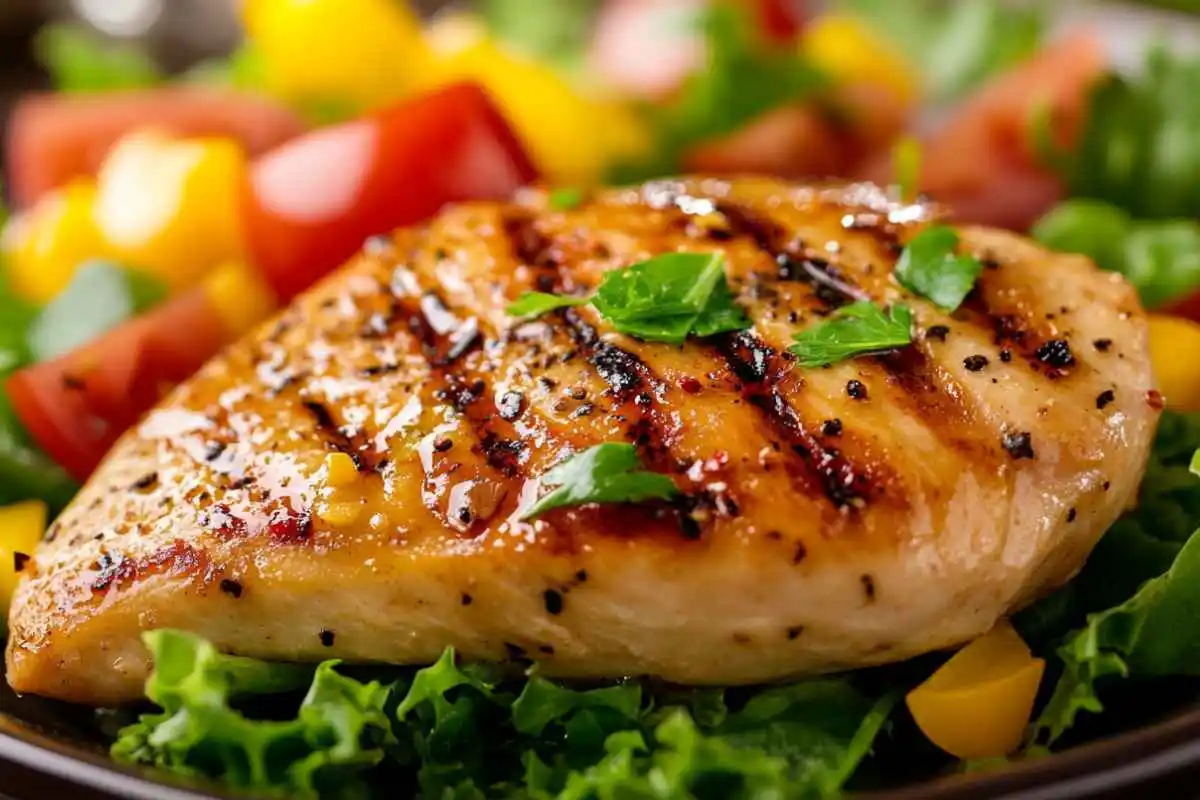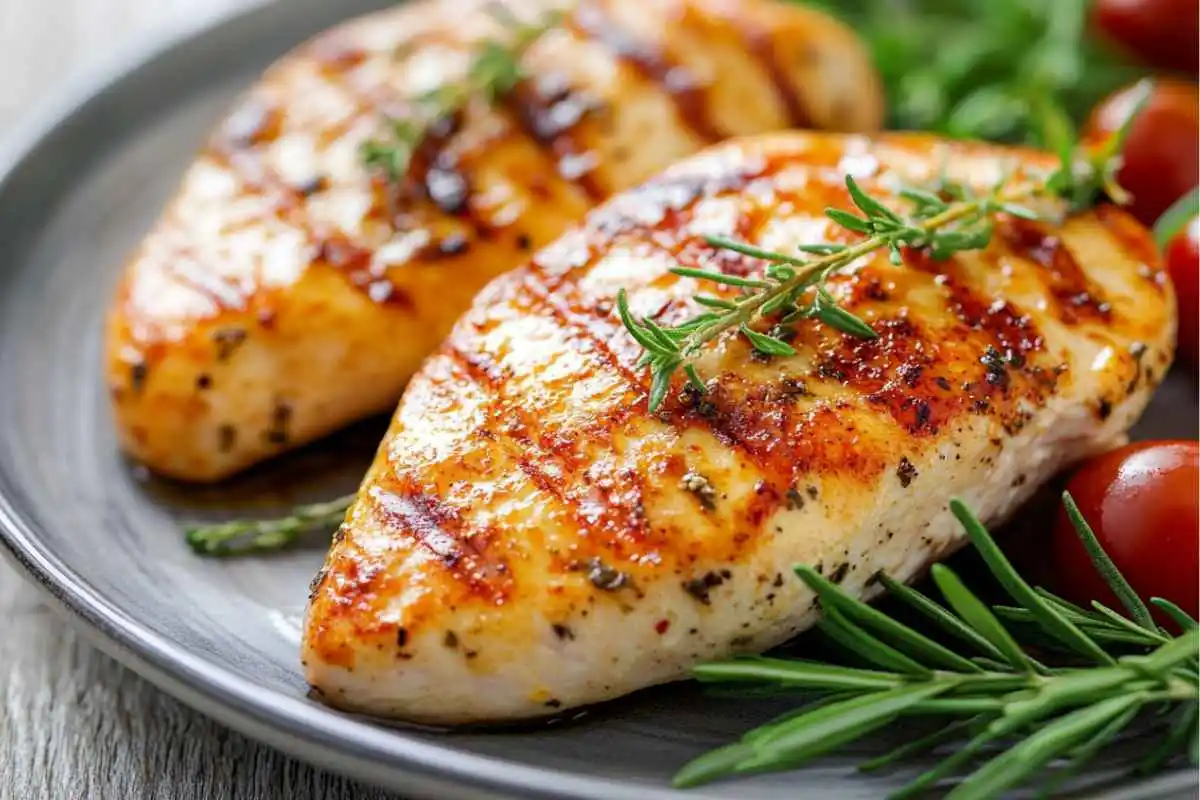Looking for a way to whip up quick, delicious meals without spending hours in the kitchen? These Thin chicken breast recipes might just be your new best friend.
These versatile cuts of chicken cook faster, absorb marinades better, and pair perfectly with a variety of flavors, making them a go-to ingredient for busy weeknights or lazy weekends.
This guide on thin chicken breast recipes is designed to help you master the art of cooking this lean protein like a pro.
Whether you’re baking, pan-frying, or sautéing, thin chicken breasts ensure tender, juicy results every time—no dryness, no hassle.
Plus, their quick-cooking nature means you’ll have dinner ready in a flash!
From light and healthy options like Greek chicken bowls to comforting dishes like creamy mushroom chicken, the possibilities with thin chicken breasts are endless.
Ready to elevate your weeknight dinners?
Let’s dive into the best techniques and recipes to make the most out of this kitchen staple.
Why Cook Thin Chicken Breasts?
Thin chicken breasts are a game-changer in the kitchen, offering numerous benefits that make them a favorite for home cooks and chefs alike.
If you’re looking for a protein option that’s quick, versatile, and easy to work with, thin chicken breasts are the way to go. Here’s why:
1. Faster Cooking Time
One of the biggest advantages of thin chicken breasts is their quick cooking time. Unlike thicker cuts, which require longer cooking periods to ensure they’re fully cooked, thin slices can be ready in just a few minutes.
This not only saves time but also makes them ideal for those busy weeknights when you need dinner on the table fast.
2. Easier to Achieve Even Cooking
Cooking thick chicken breasts can sometimes feel like a balancing act—getting the center fully cooked without overcooking the edges is tricky.
Thin chicken breasts eliminate this problem by ensuring the entire piece cooks evenly, reducing the risk of undercooked or dry meat.
Pro Tip : To achieve perfectly even cooking, make sure your slices are uniform in thickness. If you’re working with thicker breasts, consider slicing them horizontally or pounding them gently with a meat mallet to create even pieces.
3. Perfect for a Variety of Cuisines and Cooking Methods
Thin chicken breasts are incredibly versatile, lending themselves well to a wide range of cuisines and cooking styles. Whether you’re pan-frying, grilling, baking, or stir-frying, these cuts adapt beautifully to almost any recipe.
Their ability to soak up marinades quickly makes them perfect for bold flavors, while their tenderness ensures they pair well with lighter, delicate sauces.
By choosing thin chicken breasts, you’re setting yourself up for success in the kitchen.
They’re quick to cook, easy to handle, and versatile enough to fit into almost any dish.
Whether you’re a seasoned cook or just starting, thin chicken breasts are an ingredient that guarantees great results every time.
How to Slice Chicken Breasts Thin!

Learning how to properly slice chicken breasts into thin, even pieces is a simple skill that can elevate your cooking game. Whether you’re preparing chicken for stir-fries, grilling, or pan-frying, thin slices cook faster and absorb seasonings more evenly.
Here’s a step-by-step guide to ensure you get perfectly sliced chicken every time.
Step-by-Step Guide on Cutting Chicken Breasts into Thin Slices
Prepare Your Workspace:
Trim the Chicken Breast:
Position the Chicken:
Slice Horizontally:
Tips for Uniform Slicing
Use Semi-Frozen Chicken:
Pound to Even Thickness:
Use a Sharp Knife:
Safety Tips for Handling Raw Chicken
Wash Your Hands and Tools:
Use Separate Cutting Boards:
Chill Promptly:
Mastering the art of slicing chicken breasts thinly not only improves the texture and flavor of your dishes but also makes cooking more efficient.
Follow these steps and tips to create evenly sliced chicken that’s perfect for any recipe.
How to Cook Thin Chicken Breasts!

Thin chicken breasts are versatile and cook quickly, making them perfect for busy weeknights. Whether you prefer baking for a hands-off approach or pan-frying for a crispy finish, here’s how to prepare thin chicken breasts to perfection.
Baking Thin Chicken Breasts
Baking is an easy, no-fuss way to cook thin chicken breasts evenly and keep them juicy. Follow these steps for delicious results:
Preheat the Oven:
Prepare the Chicken:
Arrange on a Baking Sheet:
Bake to Perfection:
Rest Before Serving:
Tips for Juicy Baked Chicken Breasts:
Pan Frying Thin Chicken Breasts
Pan-frying creates a golden, crispy exterior while locking in the chicken’s natural juices. Here’s how to do it right:
Heat the Pan:
Prepare the Chicken:
Cook the Chicken:
Finish with Flavor:
Tips for Perfectly Pan-Fried Chicken:
Whether you bake or pan-fry, thin chicken breasts are a versatile ingredient that adapts to a variety of flavors and techniques.
Experiment with seasonings, marinades, and garnishes to create your perfect dish.
Favorite Thin Chicken Breast Recipes

Thin chicken breasts are a versatile ingredient that can be transformed into a variety of delicious dishes. Here are some crowd-pleasing recipes that highlight the flavor and adaptability of thinly sliced chicken breasts:
Easy Italian Chicken Cutlets
Sheet Pan Chicken and Gnocchi Pesto
Healthy Greek Chicken Bowls
Easy Lemon Chicken
Kung Pao Chicken
Creamy Mushroom Chicken
Each of these recipes showcases the versatility of thin chicken breasts and their ability to shine in a range of cuisines.
Whether you’re craving something hearty, light, or bold in flavor, there’s a dish here to satisfy your taste buds.
Expert Tips for Cooking Thin Chicken Breasts

Cooking thin chicken breasts can be a breeze when you know the right techniques to ensure they turn out tender, juicy, and flavorful every time.
Follow these expert tips to elevate your cooking game:
1. Don’t Overcook the Chicken
Thin chicken breasts cook quickly, so it’s essential to keep an eye on them. Overcooking can lead to dry and tough meat.
Pro Tip : Use a meat thermometer to check that the internal temperature reaches 165°F (74°C), then remove from heat immediately.
2. Pound for Even Thickness
If your chicken slices aren’t uniform in thickness, the thinner parts may overcook while the thicker parts remain undercooked.
Pro Tip : Place the chicken between two sheets of plastic wrap or parchment paper and gently pound with a meat mallet until the pieces are evenly thick.
3. Marinade for Moisture and Flavor
Marinating thin chicken breasts not only enhances their flavor but also helps retain moisture during cooking.
Pro Tip : Use marinades with a balance of acid (lemon juice, vinegar), oil, and seasonings. Marinate for at least 30 minutes or up to 24 hours for the best results.
4. Use High-Quality Cooking Tools
The right tools can make a big difference when cooking thin chicken breasts.
Pro Tip : Use a heavy-bottomed skillet, like cast iron, for pan-frying to achieve a golden crust. For baking, a non-stick baking sheet or parchment paper will prevent sticking.
5. Preheat Your Cooking Surface
Whether you’re baking, grilling, or pan-frying, always preheat your cooking surface before adding the chicken. This method promotes even cooking and helps retain the chicken’s natural juices for a tender result."Would you like any further refinements
Pro Tip : When pan-frying, the oil should shimmer but not smoke before adding the chicken.
6. Rest the Chicken Before Serving
Letting the chicken rest for 5 minutes after cooking allows the juices to redistribute, resulting in tender and flavorful meat.
Pro Tip : Cover the chicken loosely with foil during resting to keep it warm without overcooking.
7. Customize Seasonings for Variety
Thin chicken breasts are a blank canvas for flavors, so don’t be afraid to get creative with seasonings.
Pro Tip : Try spice blends like Cajun, Italian herbs, or a simple garlic and paprika rub to match the flavor profile of your dish.
By keeping these expert tips in mind, you’ll consistently achieve tender, juicy, and flavorful thin chicken breasts, no matter how you choose to prepare them.
Conclusion
Thin chicken breasts are a versatile and time-saving ingredient that can elevate your cooking with minimal effort. Whether you’re baking, pan-frying, or air frying, mastering the art of cooking thin chicken breasts opens the door to a variety of flavorful, quick, and healthy meals.
With their fast cooking time, ability to absorb marinades, and compatibility with countless recipes, thin chicken breasts are the perfect choice for busy weeknights or meal prepping.
From crispy Italian chicken cutlets to savory Kung Pao chicken, the possibilities are endless.
Remember to use the tips and techniques shared in this guide to ensure juicy, tender results every time. Whether it’s slicing them perfectly thin, experimenting with new seasonings, or using the right cooking methods, you now have everything you need to succeed.
So, why wait? Grab those chicken breasts and try out a new recipe today. Your next favorite meal is just a few simple steps away!
Recipe FAQs
To prevent thin chicken breasts from drying out, focus on proper cooking techniques:
Don’t overcook: Use a meat thermometer to ensure the internal temperature reaches 165°F (74°C) and no higher.
Marinate: Marinate the chicken before cooking to lock in moisture.
Rest: Let the chicken rest for 5 minutes after cooking to allow the juices to redistribute.
You can thin chicken breasts by either slicing them horizontally with a sharp knife or pounding them to an even thickness using a meat mallet. Place the chicken between two sheets of plastic wrap or parchment paper to prevent mess while pounding.
Thin chicken breasts are naturally tender, but you can enhance their texture by:
Marinating: Use acidic ingredients like lemon juice, vinegar, or yogurt to tenderize the meat.
Pounding: Flatten the chicken to an even thickness to break down the fibers and ensure even cooking.
The key to moist chicken breasts lies in the cooking process:
Cook quickly over high heat to seal in juices.
Brine the chicken in a saltwater solution for extra moisture retention.
Use marinades with both oil and acid for flavor and moisture.
Monitor the temperature: Use a meat thermometer to remove the chicken from heat as soon as it reaches 165°F (74°C).
Cook at the right heat: Use medium-high heat for pan-frying or a moderate oven temperature (375°F/190°C) for baking.
Cook evenly: Pound or slice the chicken to ensure uniform thickness for consistent cooking.

